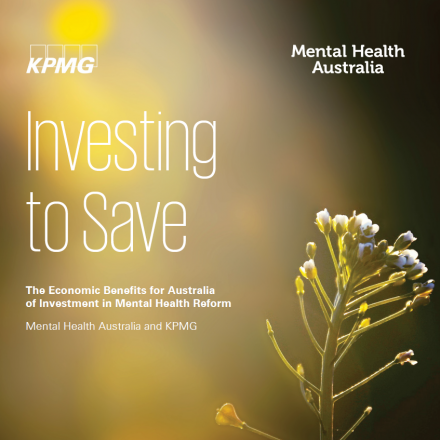Young people with mental illness need bridge to employment and education
 |
Article by Associate Professor Eóin Killackey
|
 Navigating the transition to adult life, establishing an independent identity and secure lifestyle is a major challenge for all of us. An essential element of this pathway is the scaffolding that education and work provide. Completing education and getting a job is made much harder if mental ill-health emerges and particularly if more persistent and disabling forms of mental illness become entrenched. Mental illness is by far the most common cause of disability illness in young people. 75% of people who will develop a mental illness will do so before the age of 25 years.
Navigating the transition to adult life, establishing an independent identity and secure lifestyle is a major challenge for all of us. An essential element of this pathway is the scaffolding that education and work provide. Completing education and getting a job is made much harder if mental ill-health emerges and particularly if more persistent and disabling forms of mental illness become entrenched. Mental illness is by far the most common cause of disability illness in young people. 75% of people who will develop a mental illness will do so before the age of 25 years.
Yet young people with mental illness desperately want to complete their studies, work in regular jobs, earn money and enjoy their lives. Despite this, their lives are more likely to be characterised by unemployment, welfare receipt, and social marginalisation. Their route to the “contributing life” that our National Mental Health Commission has advocated for them to achieve is blocked.
There are a number of factors that contribute to their unemployment. These include a lack of qualifications and experience in young people whose education or training has been disrupted by mental illness; stigma by employers, carers and clinicians; self-stigma and adoption of the belief that people with mental illness cannot or should not work; and the current employment system that fails to help people with mental illness enter or return to work.
It is not surprising that with this array of factors stacked against them, people with mental illness are the largest and fastest growing group on the Disability Support Pension (DSP). What is surprising is that in the face of all these and other factors, seeking employment is the number one goal of people with mental illness.
The Federal Government has announced a policy in the budget of requiring people on the DSP under the age of 35 to be reassessed with respect to their capacity to work. To an extent, this is congruent with the desire that people with mental illness express to work in the open labour market. Where the policy falls short is in the absence of the provision of a bridge from their current situation to employment or education.
For most people on a DSP, the appropriate employment service to assist them to return to employment is a Disability Employment Service (DES). Some people with a mental illness may also be eligible for a service through streams three and four of Job Services Australia (JSA). The great problem for people with mental illness accessing these services is that for this cohort they simply do not work .
There are no specific figures for outcomes of people with mental illness accessing JSA services. For people with disabilities more generally accessing streams three and four, only 33.4% and 23.1% respectively found employment. A government review of DES published in 2012 showed that about one-quarter of people were placed into employment, but only 14% kept their jobs for 13 weeks or longer.
My colleagues and I at Orygen Youth Health Research Centre have released a report which makes recommendations to address this, and allow young Australians who experience mental ill-health to still achieve their vocational dreams. We are starting from the lowest of bases with less than 20% of people with serious mental illness currently working. We have noted that the employment systems in Australia for people with mental illness do not use the interventions that Australian and international evidence shows can get approximately 60% of people with mental illness back to work and up to 85% of young people, even with the most severe forms of mental illness such as schizophrenia.
The intervention that has the most support is called Individual Placement and Support (IPS). In this intervention an employment specialist works as a member of the mental health treatment team. They work one-on-one with people with mental illness who wish to return to work. They assist with the job search, the interview preparation, practical issues about getting to work and provide ongoing support after employment to help the individual cope with any issues that arise in the workplace.
Mental health disorders represent the largest cause of disability in Australia and cost the economy an estimated $20 billion annually through lower productivity and labour force participation. The World Economic Forum estimates that because of the timing in the life cycle, mental illness will outpace all other non-communicable diseases in reducing GDP over the next 20 years, eroding a staggering 16 trillion dollars by 2030.
Adopting evidence-based models such as Individual Placement and Support will go a long way to giving young people the bridge from mental ill-health to active participation in employment and education, and allowing them to contribute fully to our society.
__________
Do you have a comment on this story? Join the conversation on Twitter @TheMHCA




